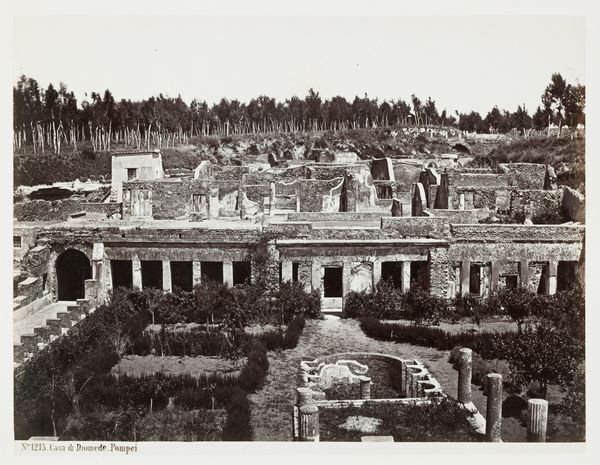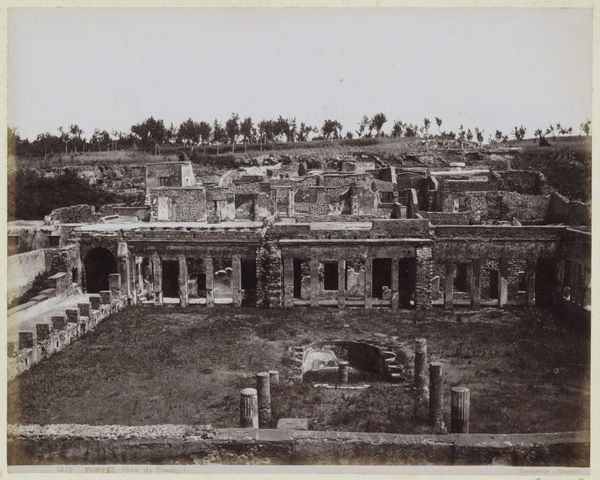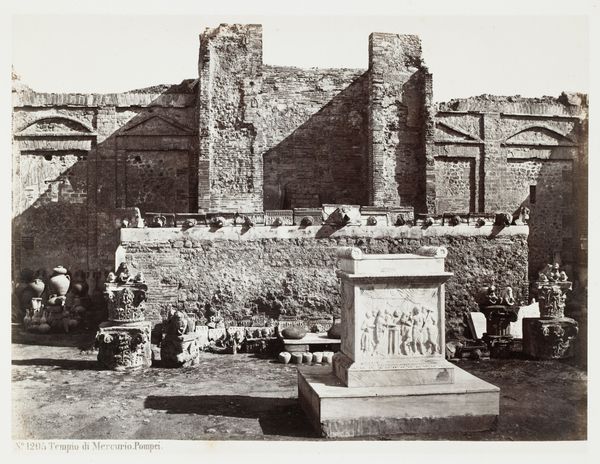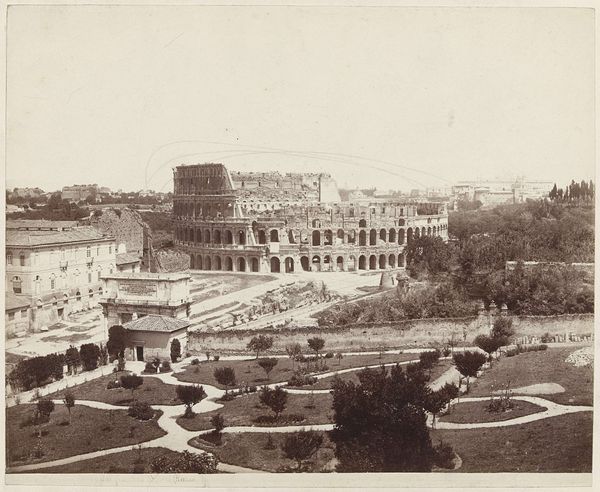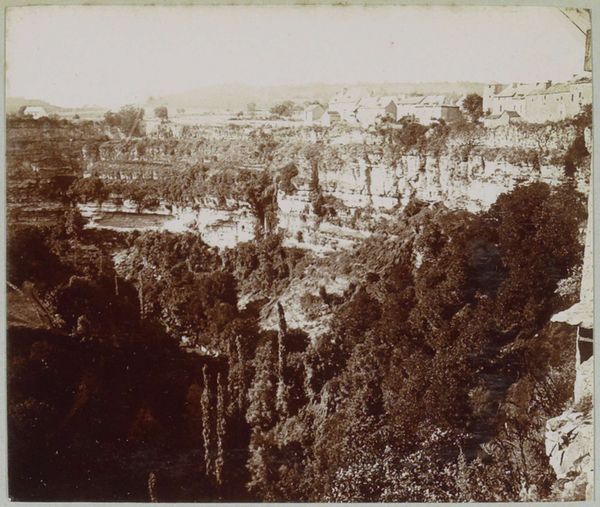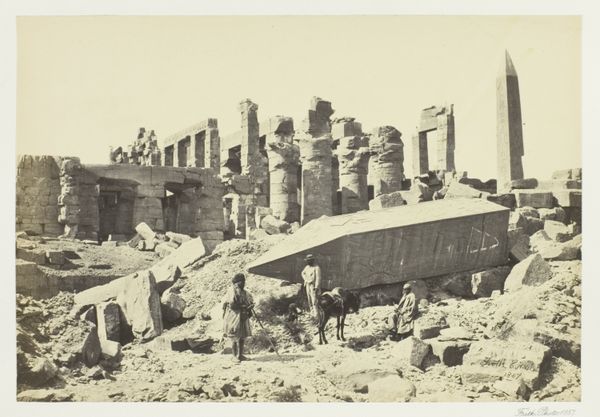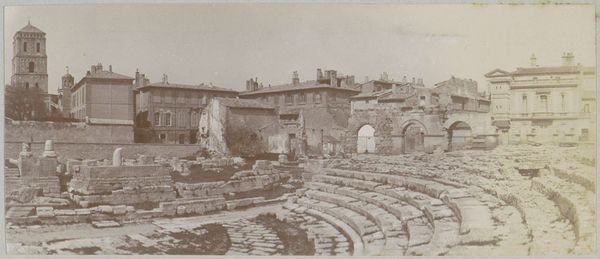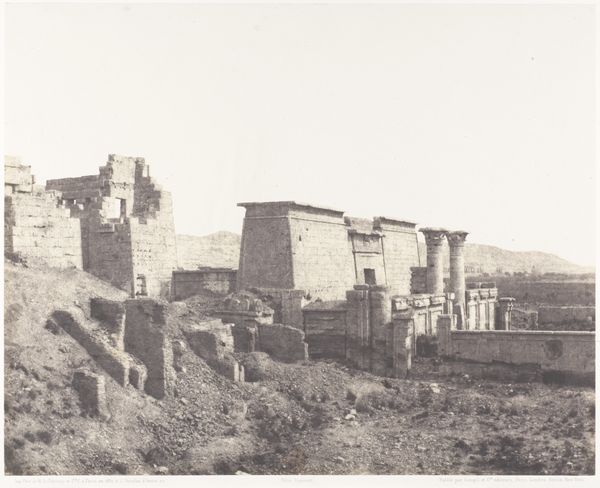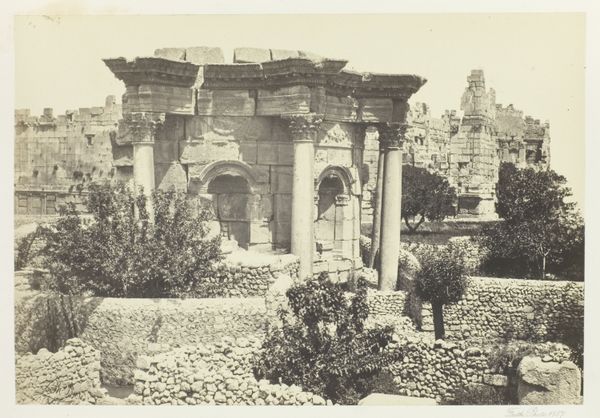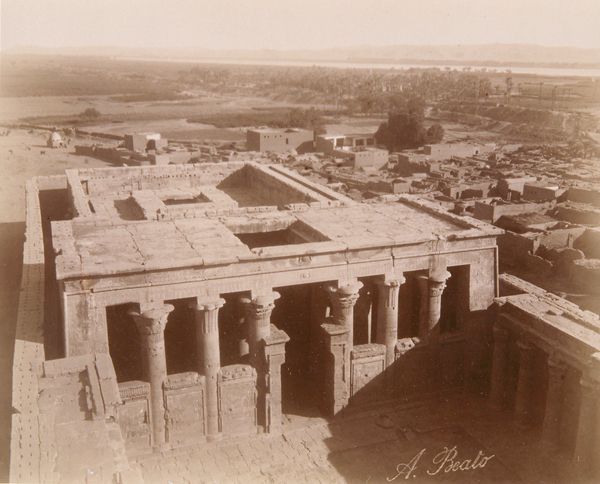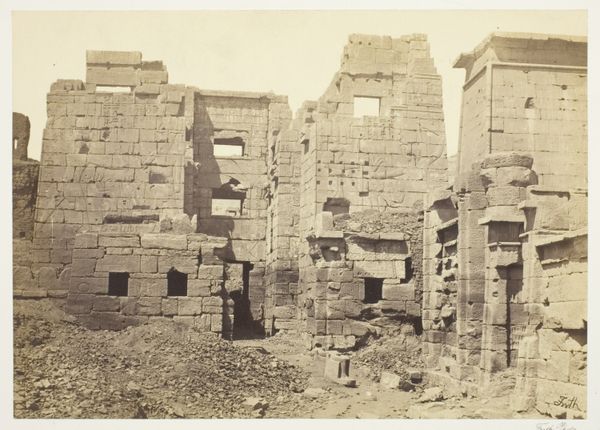
albumen-print, photography, albumen-print
#
albumen-print
#
landscape
#
classical-realism
#
photography
#
ancient-mediterranean
#
cityscape
#
albumen-print
Dimensions: 6 13/16 x 9 7/16 in. (17.3 x 23.97 cm) (image)
Copyright: Public Domain
Editor: Here we have Giorgio Sommer’s “Casa di Diomede,” an albumen print from the 19th or 20th century, depicting the ruins in Pompeii. The monochromatic tones create such a strong feeling of solemnity and the textured walls really make me think about time. What do you see in this piece? Curator: What strikes me is how Sommer, working in the late 19th century, chose this particular subject and material. Albumen printing was incredibly labor-intensive, requiring meticulous preparation of the photographic paper. He's documenting ruins of a leisure estate and is elevating this location through skilled manual labour. Don't you think this choice of printing process suggests that ruins could be thought of as luxury items? Editor: That's interesting... I hadn't considered the albumen printing process in relation to wealth. Do you think the choice of subject - Roman ruins - contributes to the conversation of luxury items too? Curator: Absolutely! The Casa di Diomede represents not just leisure but a very specific, idealized version of classical life that had become extremely popular in elite circles across Europe during this time. This image becomes part of a larger narrative about historical longing that wealthy people would enjoy in a period of their expansionism. Can you imagine a similar photograph commissioned in the same medium now? Editor: That's a great question. Probably not. Today, the materiality is secondary to capturing the most detail. If it were commissioned, the statement would change. Curator: Precisely! This image, beautiful as it is, acts as a reminder of how materials and processes are always entwined with social and economic conditions. It definitely influences how we perceive a work of art. Editor: I see your point! Now I’m thinking more deeply about the intent behind this specific medium and this classical subject. Thank you!
Comments
No comments
Be the first to comment and join the conversation on the ultimate creative platform.
